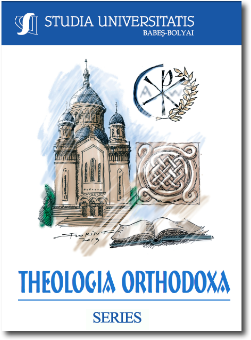FENOMENOLOGIE ȘI TEOLOGIE APOFATICĂ: RECEPTAREA SF. DIONISIE AREOPAGITUL ÎN GÂNDIREA LUI JEAN-LUC MARION
PHENOMENOLOGY AND APOPHATIC THEOLOGY: THE RECEPTION OF ST DIONYSIUS THE AREOPAGITE IN JEAN-LUC MARION’S THOUGHT
Author(s): Nicolae TurcanSubject(s): Philosophy of Mind, Systematic Theology
Published by: Studia Universitatis Babes-Bolyai
Keywords: St. Dionysius the Areopagite; Jean-Luc Marion; Christian apophaticism; saturated phenomenon; subject; hermeneutics
Summary/Abstract: This text analyses the reception of St Dionysius the Areopagite’s apophaticism in Jean-Luc Marion’s thought. After a dispute with Jacques Derrida, who claimed that negative theology returns to affirmations after having passed through negations, Marion reads Dionysius’ apophaticism in the same way the Tradition of the Church did. Hence, he asserts that apophaticism is a third way, beyond affirmations and negations. As Marion’s apology evolves, Dionysius’ influences on his thought appear in concepts such as “God without being,” distance, and saturated phenomenon.Furthermore, this study argues the role of the human being in apophatic theology. Because of his radical phenomenology of donation, Marion reverses intentionality in counter-intentionality, experience in counter-experience, and subject in adonné. From this point on, the subject/l’adonné seems to have no determinative role for apophatic gnoseology, although Church Tradition always affirmed the importance of faith and virtues for spiritual ascent. The solution proposed in this text makes a distinction between Kant’s transcendental and the conditions of possibility gained by hermeneutics, ascetics, liturgy, and divine grace. L’adonné has no previous Kantian conditions of possibility; however, it can create some conditions of possibility from previous saturated phenomena. These “conditions” do not jeopardize the excess of the saturation.
Journal: Studia Universitatis Babes-Bolyai - Theologia Orthodoxa
- Issue Year: LX/2015
- Issue No: 2
- Page Range: 159-182
- Page Count: 24
- Language: English, Romanian

